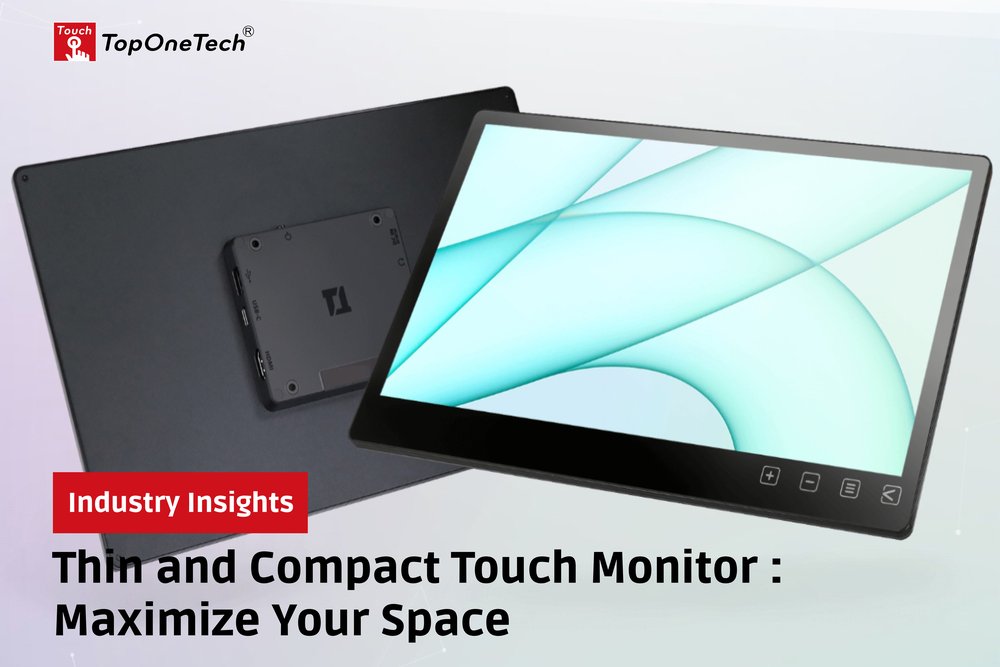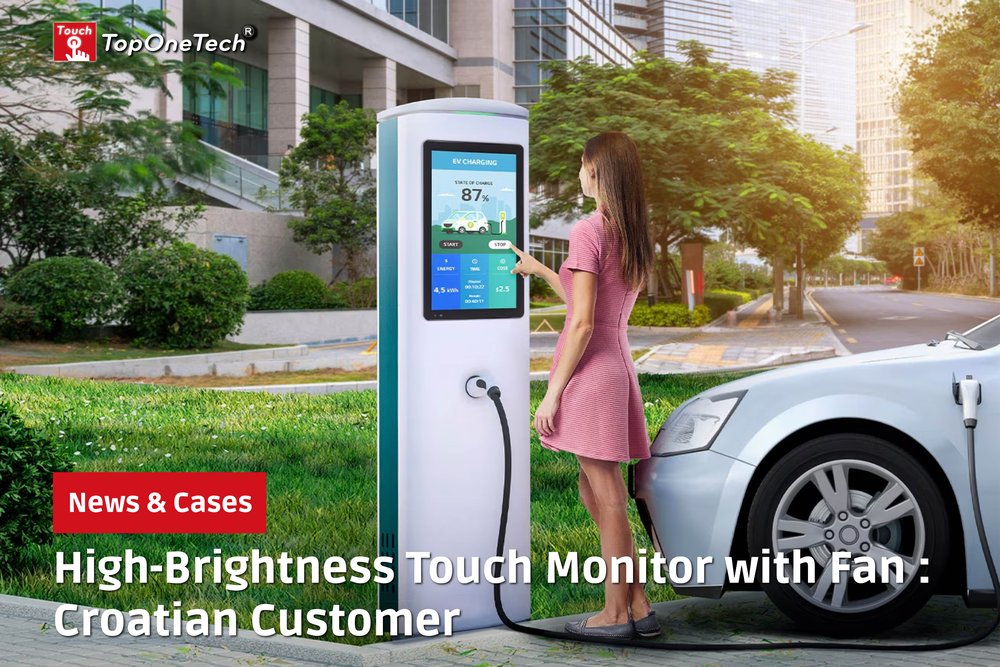Projected Capacitive Touchscreen Advantages – Capacitive touch screen is a kind of display utilizing the electrical properties of the human body as an input way. When a finger or input device like a stylus comes in contact with the display it detects when and where on the display the touches are. We mainly divide capacitive screens into two types: surface capacitive screens and projected capacitive touchscreens. Projected capacitive touchscreen technology further divides into self-capacitance and interactive capacitance.

1.Surface Capacitive Screens
Surface capacitive touch screens sense touch behaviour on the screen surface through electric field induction. An ITO layer evenly coats its panel. Each of the four corners of the panel has an outlet wire connected to the controller. During operation, the touch screen surface generates a uniform electric field. When a grounded object touches the screen surface, the electrodes can sense the change in charge on the screen surface and identify the coordinates of the touch point.
Surface capacitive touch screens have long service life and high light transmittance, but have low resolution and do not support multi-touch. Large-size outdoor touch screens, such as public information platforms (POI) and public service (sales) platforms (POS), currently mainly use it.
2.Projected Capacitive Screen
Projected capacitive touch screens utilize electrostatic field lines emitted by touch screen electrodes for sensing. We can divide projected capacitive sensing technology into two types: self-capacitance and interactive capacitance.
Self-capacitance
Self-capacitance is also known as absolute capacitance. It uses the sensed object as the other plate of the capacitance. Detecting changes in the coupling capacitance identifies the touch position as the object induces charge between the sensing electrode and the sensed electrode. However, in the case of a single touch, the system identifies only one set of coordinates in the X-axis and Y-axis directions through capacitance changes, and the combined coordinates are also unique. When two points are touched on the touch screen, and these points are not in the same X direction or the same Y direction, the system combines four coordinates by projecting two coordinates in the X direction and two in the Y direction, respectively. Obviously, only two coordinates are real, and the other two are commonly referred to as “ghost points.” Therefore, self-capacitive screens cannot achieve real multi-touch.
Interactive Capacitance
Interactive capacitance, also known as crossing capacitance, occurs due to the coupling of adjacent electrodes, generating capacitance. The system senses the change in interactive capacitance when the sensed object approaches the electric field line from one electrode to another electrode. When the horizontal electrodes send out stimulation signals in sequence, all the vertical electrodes receive the signals at the same time. This way, the system can obtain the capacitance value of the intersection of all horizontal and vertical electrodes, representing the capacitance of the entire two-dimensional plane of the touch screen. When human fingers approach, the local capacitance will decrease. Based on the touch screen’s two-dimensional capacitance data change, the system computes the coordinates of each touch point accurately. Thus, despite multiple touch points on the screen, the system accurately calculates the real coordinates of each touch point.
Manufacturers adjust sensing capacitance to allow both types of projected capacitive sensors to detect finger touches accurately anytime. Users can utilize multiple fingers, not just one, for touch input. Since 2007, Apple’s iPhone and iPad series products’ success accelerated the rapid development of projected capacitive screens, replacing resistive touch screens.
Advantages of Projected Capacitive Touchscreen
The advantages of projected capacitive screens are as follows:
1.High Definition
Projected capacitive screens have high-resolution and high-density pixels, enabling clearer and more detailed images and text.
2.Multi-Touch
The projected capacitive screen supports multi-touch, allowing multiple people to operate at the same time, improving the user’s interactive experience.
3.Fast Response Speed
The projected capacitive screen has a very fast response speed and can achieve real-time response, improving the user’s operating efficiency.
4.Space Efficiency
Users can directly project projected capacitive screens onto a flat surface or wall without requiring additional displays.
5.Good Display Effect
The projected capacitive screen displays vivid images and videos with bright colors, high brightness, strong contrast, and realistic effects.
6.Easy to Maintain
Projected capacitive screens lack mechanical parts and are not easily damaged, enabling low maintenance costs and long service life.
Projected capacitive screens have the characteristics of high sensitivity, high precision, fast response, and support multi-touch. Electronic products like smartphones, tablets, TVs, and car navigation systems widely use it.
About Top One Tech
Founded in 2010, Top One Tech has been a global leader in touch technology and a world-leading supplier of touch technology, products and industry solutions since then. Top One Tech’s product portfolio includes touch screens (mainly projected capacitive touch screens and infrared touch screens), touch monitors and touch all-in-one PCs to meet the stringent requirements of different industries including casinos, testing and measuring equipment, banking, industrial automation, medical equipment, point-of-sale, retail displays and transportation applications.
Find Out More : Top One Tech Projected Capacitive Monitor



